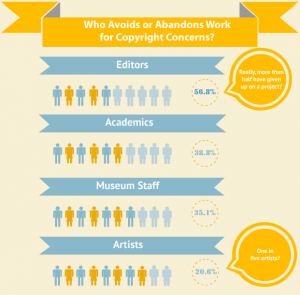CAA News Today
An Interview with Suzanne Preston Blier on CAA’s Code of Best Practices and Publishing with Fair Use
posted by CAA — May 19, 2020
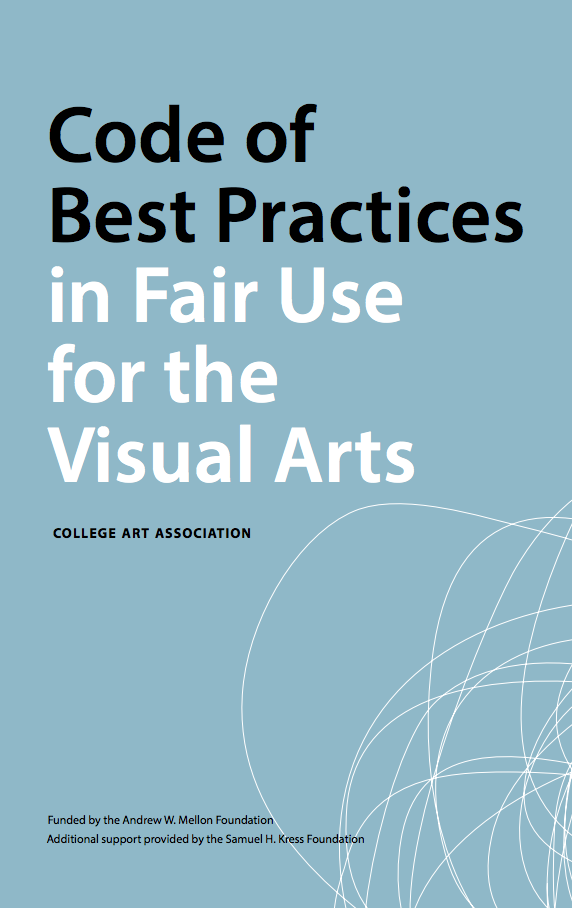 In 2019, Suzanne Preston Blier, professor of African art at Harvard University and former president of CAA, published a major book on Picasso’s use of global imagery, Picasso’s Demoiselles: The Untold Origins of a Modern Masterpiece. In addition to its scholarship the book is groundbreaking for its reliance on fair use, the principle within US copyright law that permits free reproduction of copyrighted images under certain conditions. CAA led the way among visual arts groups in calling for reliance on fair use, producing in 2015 its Code of Best Practices in Fair Use for the Visual Arts.
In 2019, Suzanne Preston Blier, professor of African art at Harvard University and former president of CAA, published a major book on Picasso’s use of global imagery, Picasso’s Demoiselles: The Untold Origins of a Modern Masterpiece. In addition to its scholarship the book is groundbreaking for its reliance on fair use, the principle within US copyright law that permits free reproduction of copyrighted images under certain conditions. CAA led the way among visual arts groups in calling for reliance on fair use, producing in 2015 its Code of Best Practices in Fair Use for the Visual Arts.
In this interview with Patricia Aufderheide, university professor and founding director of the Center for Media & Social Impact (CMSI) at American University, and a principal investigator in the CAA fair use project, Blier relates how she became an inadvertent pioneer of fair use in art history.
An Interview with Suzanne Preston Blier, Harvard University
By Patricia Aufderheide, American University
I met Prof. Blier, an award-winning art historian, when CMSI joined others in facilitating the Code of Best Practices in Fair Use for the Visual Arts for the College Art Association (CAA), with funding from the Samuel H. Kress and Andrew W. Mellon Foundations. Fair use is the well-established US right to use copyrighted material for free, if you are using that material for a different purpose (such as academic analysis, for instance) and in amounts relevant to the new purpose. Blier was the incoming president, as the Code launched.
The project addressed a huge need. Art historians, visual artists, art journal and book editors, and museum staff all have faced major hurdles in accomplishing their work because of copyright. Art historians avoided contemporary art in favor of analyzing public domain material. Visual artists hesitated to undertake innovative projects that reuse existing cultural material. Editors, or sometimes their authors, faced monumental bills for permissions and sometimes those permissions depended on an artist or artist’s estate agreeing with what they say. Museums hesitated to do virtual tours, or use images in their informational brochures, or even to mount group exhibits, because of prohibitive permissions costs. All together, some people in the visual arts called this “permissions culture.”
Once the Code came out, some things changed immediately. Museums rewrote their copyright use policies. Artists made new work. CAA’s publications—some of the leading journals in the field—adopted fair use as a default choice.Yale University Press prepared new author guidelines for fair use of images in scholarly art monographs to encourage fair use. Blier was one of the Code’s champions.
And then she needed it herself. As she began work on her most recent book, which ultimately resulted in Picasso’s Demoiselles: The Untold Origins of a Modern Masterpiece (Duke University Press, 2019, winner of the 2020 Robert Motherwell Book prize for an outstanding publication in the history and criticism of modernism in the arts by the Dedalus Foundation), she realized the subject faced the stiffest possible copyright challenge. To tell her story, she would have to be able to show images from a variety of artists, most challengingly, Picasso. She thought of Duke University Press, a publisher that has been willing to go ahead of others on fair use. So Blier approached them. Duke was very supportive, and they ended up hiring extra legal counsel for this. In the end, Blier said, she had to rewrite certain sections, and redo some images at the suggestion of outside counsel, to strengthen the fair use argument.
Blier tells the story of how the book got out into the world (and won an award), below.
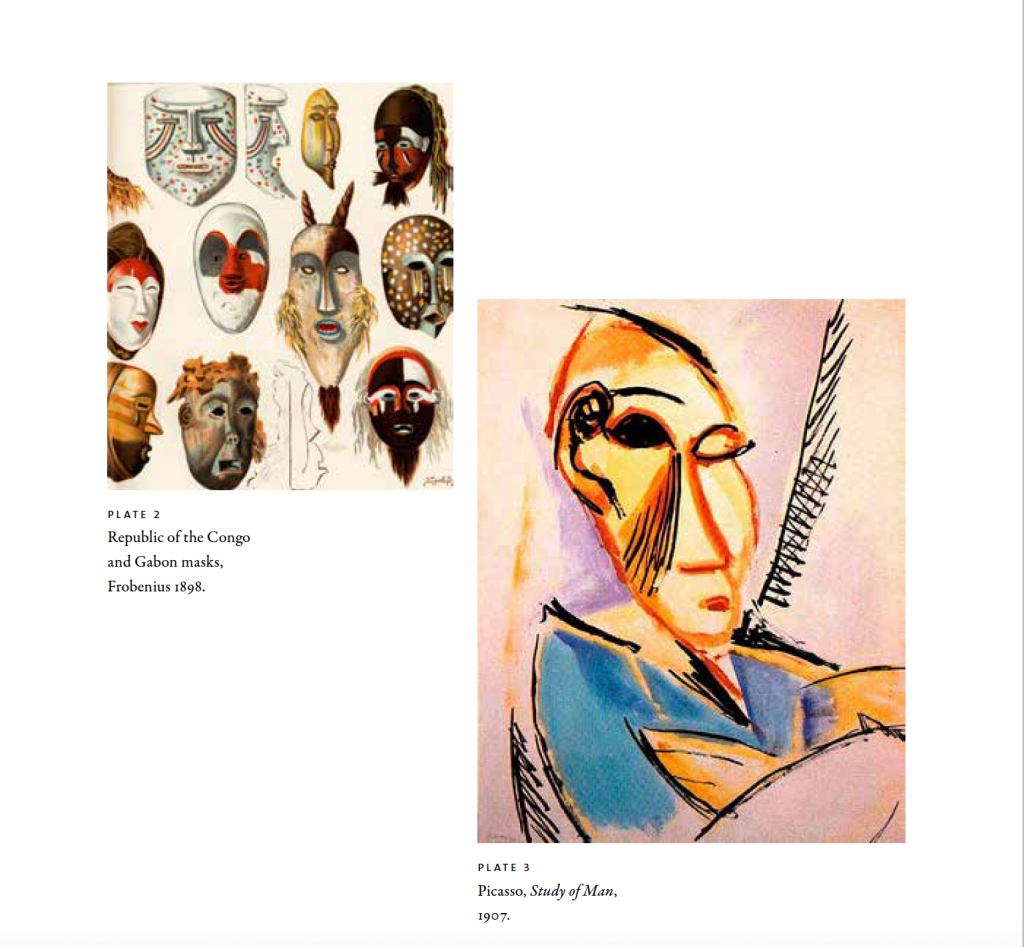
Figure 1. Congo masks published in Leo Frobenius’ 1898 Die Masken und Geheimbünde Afrikas alongside Pablo Picasso’s Study of Man (1907). The Congo mask at the bottom, second from the left is the likely source for the crouching demoiselle. The mask at the top left shows tear lines from the eyes crossing diagonally down the cheeks similar to Picasso’s preliminary study for one of the men in an early compositional drawings for the canvas.
You’re an expert in African art. How did you end up writing a book about one of the most famous modernist artists?
This is a book I never intended to write; it found me. For my previous book, Art and Risk in Ancient Yoruba: Ife History, Power, and Identity, I was doing those last-minute bits of work in the library to check sources, and I pulled out a book adjacent to the book I was looking for, an old book by the German anthropologist, Leo Frobenius. I hadn’t read it since graduate school. As I opened it up, I looked down and I said, Wow, this is a book on African masks and they look like they’d be the ones Picasso used as models for his famous 1907 painting Demoiselles d’Avignon. At the time I had first read the book, Picasso’s drawings for the painting hadn’t been released. This time I saw it differently and as I was looking at it in the library, I saw there was tracing paper over the pictures. There was a line drawing covering each mask, and that seemed significant too.
The next thing I knew, I was hunting for a book from the Harvard library on Dahomey women warriors. It turned out it was in the medical school library, which should have been a sign. When I picked it up at the main library and flipped it open, I thought, Oh my god, it’s pornography! It was photos and line drawings of women around the world, in supposed “evolutionary” order. Photos of naked women begin with so-called “archaic,” in Papua New Guinea, right through to southern Europe, then Denmark. In the library I’m bending over, kind of hiding it, out of embarrassment. I bring it home and realize, Ohhhh! Here’s another key source for Demoiselles. This volume, which was by Karl Heinrich Stratz, had gone through multiple editions, and one was published about the same time Picasso stopped using living models. Then I found another book, by Richard Burton, which had a rendering that Picasso clearly used for his 1905 sketch Salomé.
What happened next was the clincher. I went to Paris to lecture at Collège de France. The week before my lectures, I went to hear another speaker at the Collège, a medieval historian. One of the first slides he presented was a work from a medieval illustrator, Villard De Honnecourt. This book was a modern edition of an illustrated medieval manuscript, published in the right time frame for Picasso to have seen it. And I thought, Well, here’s another source Picasso used.
Later I was also able to rediscover a photo that allowed me to date the painting to a single night in March 1907. The scene is often identified as a brothel, but bordel in French doesn’t mean bordello, but rather a chaotic or complex situation. It was my belief that Picasso was creating a time-machine kind of image of the mothers of five races, as he understood them from the Stratz ethno-pornography book and other sources, each depicted in the art style of that region or period. My larger argument is not only that Picasso was using book illustration sources, but also that these books invite us to see the canvas in a new light, and that, for Picasso, the painting has its intellectual grounding in colonial-era ideas about human and artistic evolution.
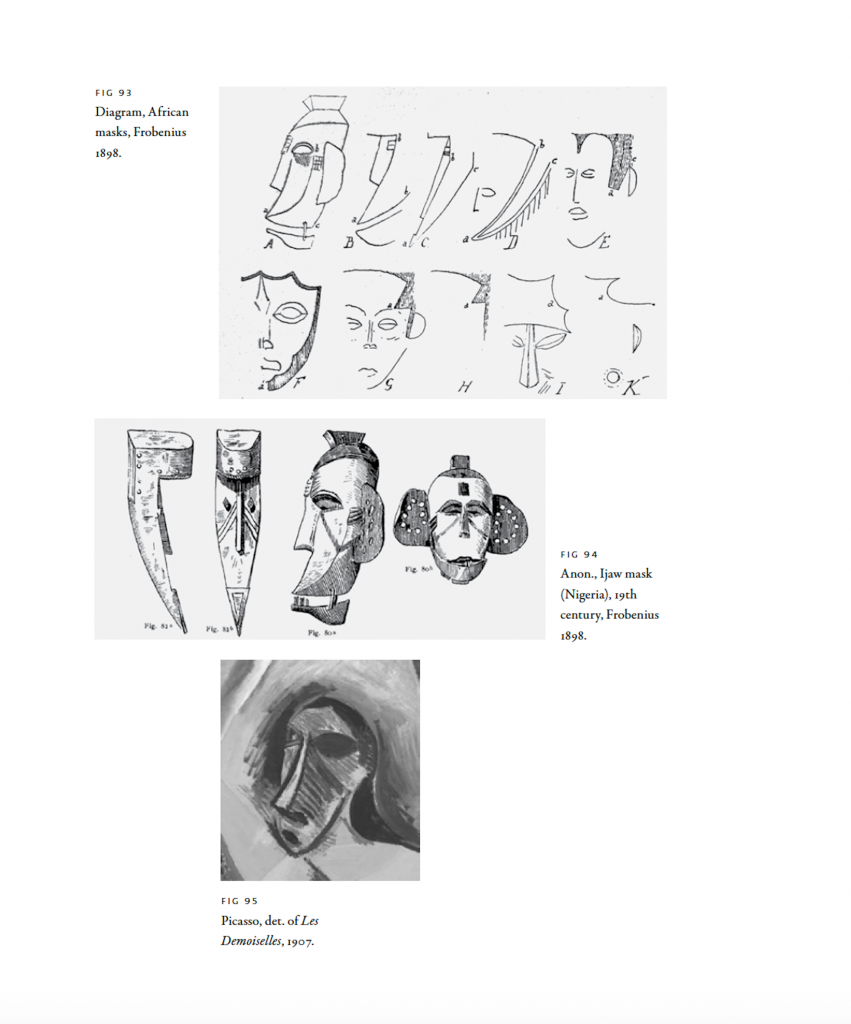
Figure 2. Illustrations from Leo Frobenius’ 1898 Die Masken und Geheimbünde Afrikas showing (top two rows) the visual development of a mask into a human face. The middle illustration ,from the same Frobenius book shows line drawings of ijaw masks from Nigeria. The bottom image is a detail of the standing African figure from Picasso’s 1907, Les Demoiselles d’Avignon which appears to be based on a combination of these two masks.
What a sleuthing job! And so you decided to write the book then?
I wrote the first two chapters while I was in Paris doing the lecture. I saw it not as a coffee-table art book, but the kind of book you put in your knapsack as you head off to a long ride on the subway.
It was easy to write, but it was a very different story for the images. I immediately got a trade publisher in Britain to agree to publish it, and then they said they could not do it, because of problems getting permission to reproduce images from the Picasso Foundation.
The Picasso Foundation is notorious for making it difficult to access Picasso images, isn’t it?
The price of permissions is high, and this Foundation like many estates is interested in guarding the artist’s reputation as well. The difficulties of publishing on Picasso have been manifested in how little publishing was being done, and how scarce the images were in that work. Since 1973, there have been few heavily illustrated books about Picasso, except by wealthy individuals or museums in relation to an exhibition. I had heard about Rosalind Krauss publishing a work without permissions—at least that’s what I heard—anyway, she used very few images. Leo Steinberg apparently had not been able to arrange the rights for a work he wanted to do, a book edition of his two seminal articles on Les Demoiselles.
Although I hadn’t realized it until recently, in September 2019 there was an important case in the US, about a set of illustrated books by Christian Zervos with a wide array of Picasso illustrations. The case was started in France, but a US judge has allowed fair use.
But generally, yes, there’s common wisdom among art historians that the Picasso Foundation is a formidable challenge.
So how did you proceed when the first publisher backed out?
I was disheartened, but I got an agent. He sent it off to ten or twelve trade publishers worldwide—and came up with nothing.
Then I realized I was going to have to go to a university press. That was a big decision. The trade publication will pay for the images, and do all the work on the rights clearance. But with a university press, you’re on your own.
One of the first people I contacted was legendary editor Ken Wissoker at Duke University Press. He was interested, but then came the issue of the images. I may have broached fair use with him from the start. The manuscript had gone through peer review and it was in great shape except for this copyright issue. I had quite a number of images—in the end, it was 338. At Duke, they won’t begin the editorial process until you have all the copyright clearances on images done. So I began the difficult process of deciding how to get the images.
Were you in contact with the Picasso Foundation directly?
I did contact them, in order to let them know about the project in general. I was doing final research work in Paris. I had framed the book as a travelogue in part addressing my discovery of these sources. I also wanted to find out so much more about Picasso. I’m not a modernist, I’m an outsider to the field. So I worked hard to get as much insight and criticism of the manuscript from specialists as I could.
I made it a point to meet with people at the Picasso Foundation. I had a Powerpoint of the images, which I showed to one of the key people there. Later I wrote to them, “here’s the manuscript, let me know if you have any thoughts.” And I heard nothing back. I had heard that with some manuscripts, they have been concerned one way or another. I didn’t want their permission for the intellectual content, but since they knew this artist and his life and family better than any academic could, I wanted their insights.
And then you started to look for permissions?
Well, I began to think about the cost of acquiring the images. The process is such that you have to go through the Artists Rights Society (ARS, a US licensing broker). And to get a price, you have to furnish the number of images, how many are color, the size of the print run, the prospective profit, and a whole series of things we could not know. Duke wouldn’t even look at the project editorially without having the rights in hand. I had heard difficult stories—that they were interested in looking at the galleys along the way, and requesting changes, for quality control, but it wasn’t possible to do this and work with the press.
If I had to guess, I would say that it might have cost me something like $80,000 of my own money to purchase the minimum number of images for this scholarly book, from which I expect to make no money, or very little.
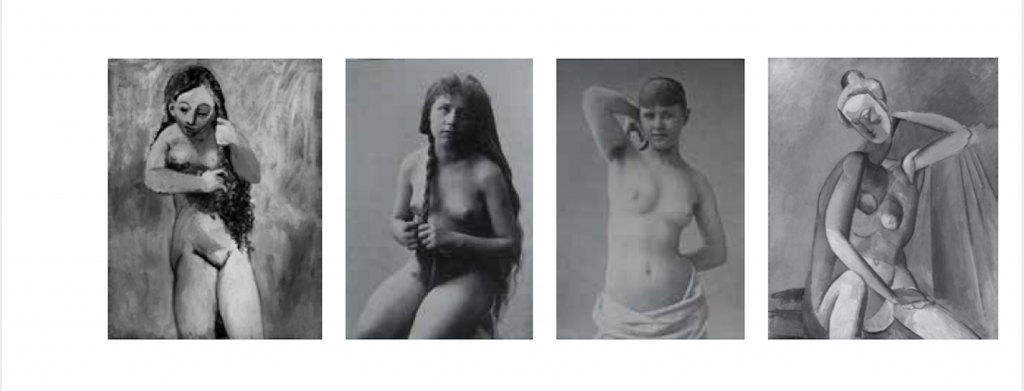
Figure 3 from left to right: Pablo Picasso, Nude Combing Her Hair, 1906; Girl braiding hair from C. H. Stratz, La beauté de la femme, 1900 (Paris); Girl from Vienna from C.H. Stratz, La beauté de la femme, 1900; Picasso Seated Female Nude, 1908. Over the course of his long career Picasso would continue to use key visual insights from Frobenius, Stratz, and other illustrated sources he was exploring in this late 1906 to early 1907 period.
So how did you come to the decision to use them under fair use?
I had been president of CAA in 2016-17, and a longtime promoter of fair use and IP issues more generally. I was involved in the creation of the Code of Best Practices in Fair Use for the Visual Arts. For me, CAA’s role in fair use is one of the most important and radical (in a positive way) things that it has ever done.
I decided that fair use would make the most sense in this context. This was a book about an important modern artist. In addition, I’m a senior scholar—this was not my first publication. If the worst happened, if I had problems, well, I’ve had a great career and this would not harm it. I have tenure and so on. Also, as the then-president of CAA, I thought it was important to do this.
Besides, this to me was part of a larger picture of what I had done in my larger career. I’m very active locally in civic affairs, and really interested in promoting transparency, and democratic ideals. I was also very fortunate to have Peter Jaszi, a foremost legal scholar on fair use (and another principal investigator on the CAA project), working with me. At his suggestion, I took out an insurance policy, which for a fee—I think about $5,000—(with a $10,000 deductible) I was able to lower my anxiety level. I also paid $400 for an attorney to look over the insurance contract. And I had good friends like you, who when I got cold feet assured me it was the right thing to do. And of course, Duke is a publisher that has been willing to go ahead of others on fair use.
Can you give me an example of something you had to change in the text to strengthen the fair use argument?
With a museum photograph of an African mask, for example, I had to explain why this particular way of photographing the work was critical to the argument in my book. I had to ad a few sentences to justify my selection of several Picasso works as well. I also had to give reasons in my text for why each of the chapter epigraphs was necessary.
Did you have to alter the use of imagery in any way to accommodate fair use?
There are changes the press made, design-wise, that reflected in part the decision to employ fair use. Many of the photos are shown in black-and-white and the majority are reduced in size. I was constrained by the fact that I could only employ fair use if I could get access to the materials without going through the Picasso Foundation. So I had to acquire nearly all the images from published books, and many of the Picasso images were published in black and white and at a very small size, in a grainy context. I had to spend a lot of time hunting down the best possible images to use. In my book they are shown in relatively small size, along with information on where you can find color versions online.
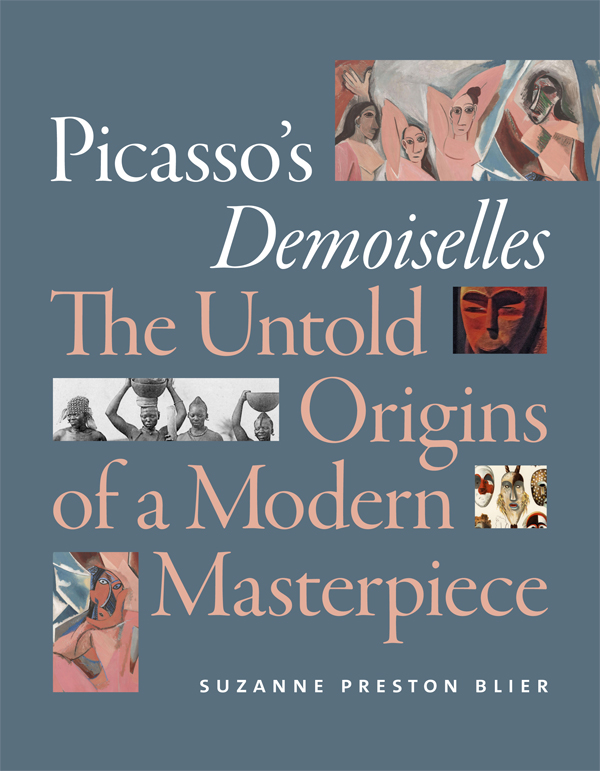
That didn’t bother me too much, though. For readers and viewers at this juncture in the Internet era, we have become expert at extrapolating the fuller figure from a small image.
There is also a small spread of color images, a couple Picasso works as well as from other artists. For these images color was central to the book.
The decision to publish largely in black-and-white was, I think, also related to the fact that the Picasso Foundation and others are concerned that color representations be incredibly accurate, and it is very hard to get the color exactly right, when copying from books. You also have an issue with paper quality in getting accurate representation.
The cover is a handsome design, and very clever. They broke up the images into thumbnail-like sections, requiring you as a viewer to put them together as one image, similar to how Picasso was thinking in the early stages of cubism, where you as a viewer of an assemblage have to assemble them in your own mind, to make it work for you as a whole.
How was the book received?
It was a finalist for the Prose Prize, a prize of publishers to authors. My previous book won it in 2016. I didn’t expect to win it this time again, in 2019. I was very honored that it was a finalist. It was also featured in the Wall Street Journal’s holiday art book list. And then, just recently, it won the Robert Motherwell Book Award.
Has the Picasso Foundation seen the book?
To date I’ve heard nothing. I was thinking earlier that the Picasso Foundation might want to stop it pre-publication. So much so that when I came back from travel in Africa, I went first to my academic mailbox, and was relieved when I saw no big legal envelope. But there has been no pushback. I certainly gave them the opportunity to comment on the content while it was still in manuscript. And last April or May, I went to France to meet with the curators at Musée Picasso about contributing an essay to a catalog. I sent them an article draft which they decided not to publish, which is fine, but also sent them a copy of the manuscript, and of course the Musée speaks to the Foundation.
Interestingly, the two cases where the Foundation has sued or prevented publication that I know of have to do with children’s books about Picasso. I don’t know what that means.
Does the wider art history community know about this?
I hope this personal story makes a difference. We still have a lot of educating to do, in spite of the work we did around the Code. I continually get, on the art history listservs, questions—How can I get permission, and I always say, Use fair use. People still don’t trust it or believe it’s more difficult than it is.
At the CAA conference I just went to in Chicago, there seems to be a division between presses. Presses at private universities–Yale, Princeton, MIT, Duke—seem to feel more comfortable exploring this. But for university presses at some public institutions, these legal issues have to be taken up with the state attorney general, and there can be real nervousness stepping outside a narrow parameter. I learned this speaking to an editor at a state university press in a progressive state, who believes they’re being held back because of this fear.
I was pleased to see at this same conference a pamphlet on fair use by Duke University Press’s former Director, Steve Cohn. In his essay, he mentions my Picasso book and how happy he is that Duke chose to publish it this way. I figured, if Steve is openly talking about this fair use project, then the proverbial cat is out of the bag, and I could be more open and provide some of the back story from my end.
CAA’s scholarly publications, The Art Bulletin, Art Journal, and Art Journal Open rely on fair use as a matter of policy, and indicate when they do so in their photo credits. View a complete discussion of fair use and CAA’s Code of Best Practices.
Announcing the 2020 Recipients of the Art History Fund for Travel to Special Exhibitions
posted by CAA — May 12, 2020
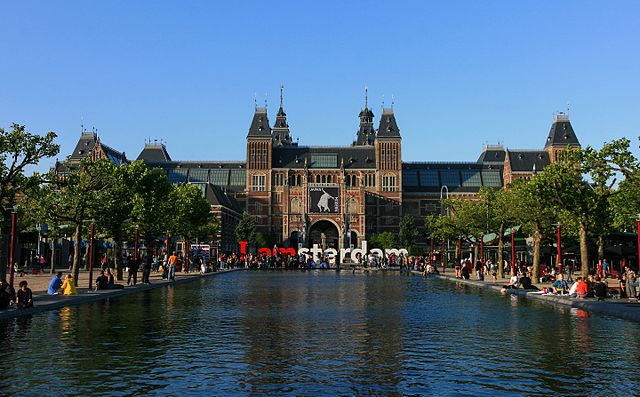
Rijksmuseum, Amsterdam
In fall 2018, we announced CAA had received an anonymous gift of $1 million to fund travel for art history faculty and their students to special exhibitions related to their classwork. The generous gift established the Art History Fund for Travel to Special Exhibitions.
The jury for the Art History Fund for Travel to Special Exhibitions has now selected the second group of recipients as part of the gift. This year’s awardees are:
Holly Flora, Tulane University, New Orleans, LA
Course: Art, Cosmopolitanism, and Intellectual Culture in the Middle Ages
Exhibition: Medieval Bologna: Art for a University City at the Frist Center for the Visual Arts, Nashville, TN
Caroline Fowler, Clark Art Institute, Williamstown, MA
Course: Slavery and the Dutch Golden Age
Exhibition: Slavery at the Rijksmuseum, Amsterdam
Maile Hutterer, University of Oregon, Eugene, OR
Course: Time in Medieval Art and Architecture
Exhibition: Transcending Time: The Medieval Book of Hours at The Getty Center, Los Angeles, CA
Erin McCutcheon, Lycoming College, Williamsport, PA
Course: Art & Politics in Latin America
Exhibition: Rafael Lozano-Hemmer: Unstable Presence at SFMOMA, San Francisco, CA
Shalon Parker, Gonzaga University, Spokane, WA
Course: Women Artists
Exhibition: New Time: Art and Feminisms in the 21st Century at the Berkeley Art Museum and Pacific Film Archive, Berkeley, CA
Rebecca Pelchar, SUNY Adirondack, Queensbury, NY
Course: Introduction to Museum Studies
Exhibition: Marcel Duchamp: The Barbara and Aaron Levine Collection at the Hirshhorn Museum, Washington, DC
As museums and schools have moved online in light of the coronavirus pandemic, we are being as flexible as necessary with the dates of travel to accommodate all award winners and classes.
The Art History Fund for Travel to Special Exhibitions supports travel, lodging, and research efforts by art history students and faculty in conjunction with special museum exhibitions in the United States and throughout the world. Awards are made exclusively to support travel to exhibitions that directly correspond to the class content, and exhibitions on all artists, periods, and areas of art history are eligible.
Applications for the third round of grants will be accepted by CAA beginning in fall 2020. Deadlines and details can be found on the Travel Grants page.
CAA Names Appointed Directors to the Board of Directors
posted by CAA — Apr 30, 2020
CAA has named John Davis, Katy Rogers, and Kenneth Wissoker to our Board of Directors as appointed directors, each for a four-year term. “CAA’s appointed directors bring experience and perspectives that complement the strength and vision of the elected members of CAA’s board. The extent of scholarship, leadership, and professional accomplishment of the three new appointed directors will be invaluable to CAA as we begin strategizing as to how the organization can best serve our members and the art community at large in light of the ongoing effects of the COVID-19 crisis,” said N. Elizabeth Schlatter, President of CAA. “We are exceedingly grateful for the service and dedication of these appointed directors as well as that of all of our board members who volunteer so much time and commitment to our field.”
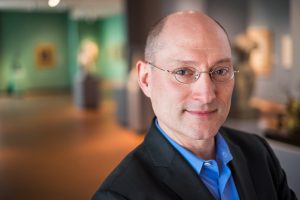
John Davis
John Davis is a historian of the art and architecture of the United States. For twenty-five years, he served on the faculty of Smith College, where he taught in the art history and American studies programs, chaired the Art Department, and served as Associate Provost and Dean for Academic Development. In 2017, he joined the Smithsonian Institution as Provost and Under Secretary of Museums, Education, and Research, with responsibility for nineteen museums, nine research institutes, twenty-two libraries, fellowships and internships, and the National Zoo. He is currently serving as the Interim Director, Cooper Hewitt, Smithsonian Design Museum, in New York City. He has been a visiting professor in Japan, Belgium, and France and is an elected member of the American Antiquarian Society. His most recent publication is Art of the United States, 1750-2000: Primary Sources (2020), coauthored with Michael Leja.
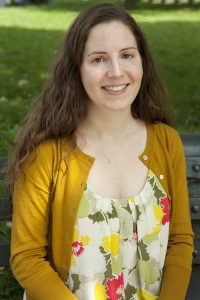
Katy Rogers
Katy Rogers is vice president and secretary of the Dedalus Foundation, where she also serves as the Programs Director and Director of the Robert Motherwell catalogue raisonné project. A graduate of the University of Colorado, she received her MA in Art History from Hunter College. She is also an alumna of the Whitney Museum of American Art’s Independent Study Program (ISP) where she was a Helena Rubinstein Curatorial Fellow. She is the co-author of the catalogue raisonné of Motherwell’s paintings and collages (Yale University Press 2012), and of Robert Motherwell: 100 Years (Skira 2015). She is currently working on a catalogue raisonné of Motherwell’s drawings to be published by Yale University Press in fall 2022. Since 2013, she has been the President of the Catalogue Raisonné Scholars Association where she co-organized the 2015 conference “The Catalogue Raisonné and its Construction” and the 2018 conference “The Afterlife of Sculptures: Posthumous Casts in Scholarship, the Market, and the Law.”

Ken Wissoker
Ken Wissoker is Senior Executive Editor at Duke University Press, acquiring books across the humanities, social sciences, and the arts. He joined the Press as an Acquisitions Editor in 1991; became Editor-in-Chief in 1997; was named Editorial Director in 2005; and assumed his current position in 2020. In addition to his duties at the Press, he serves as Director of Intellectual Publics at The Graduate Center, CUNY in New York City. He has published more than a thousand books which have won over one hundred and fifty prizes. He has written on publishing for The Chronicle of Higher Education, The Scholarly Kitchen, and Cinema Journal, and writes a column for the Japanese cultural studies journal “5.” He speaks regularly on publishing at universities in the United States and around the world.
About CAA Appointed Directors
Appointed directors bring a variety of views and skills that contribute to CAA’s growth and stability as a professional support organization. In February 2010, CAA members approved an amendment to Article VII, Section IV of the organizational By-laws to establish a new category of appointed director. Learn more.
Memorial Celebration for Professor Victor Margolin at CAA 2020
posted by CAA — Feb 05, 2020
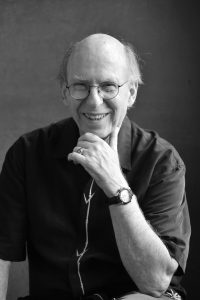
Image courtesy Bend Design Conference.
Please join us for a Memorial Celebration for Professor Victor Margolin during the 2020 Annual Conference on February 12, 2020.
Memorial Celebration for Professor Victor Margolin
Wednesday, February 12, 2020
5:30-7:30 pm
Resident’s Dining Room
Jane Addams Hull House
800 S. Halsted Street
Chicago, Illinois
If you’d like to attend, please RSVP to Rebecca Houze: rhouze@niu.edu
Victor Margolin (1941-2019) was Professor Emeritus of Design History at the University of Illinois at Chicago. He served on the CAA Board of Directors from 1993 to 1997 and was a frequent presenter and session chair at CAA’s Annual Conferences. He promoted the study of design and design history by encouraging the work of others and contributing to the activities of the Design Studies Forum. He was honored with Lifetime Achievement Awards for design research from LearnXDesign (2015) and the Design Research Society (2016). Victor was a founding editor of the academic design journal Design Issues. Books that he has written, edited, or co-edited include The Struggle for Utopia: Rodchencko, Lissitzky, Moholy-Nagy, 1917-1936; Design Discourse; The Designed World: Images, Objects, Environments; and The Politics of the Artificial: Essays on Design and Design Studies. He also edited and co-edited important volumes of essays on design titled Design Discourse (1989), The Idea of Design (1995) Discovering Design (1995) and The Designed World: Images, Objects, Environments (2002). The first two volumes of his World History of Design were published in April 2015.
In the words of his colleague and co-editor Bruce Brown, “Victor was a man of immense intellectual generosity and he mentored scholars young and old around the world. He was always a reasoned advocate of design as a tool to create societies that were more just, equitable and compassionate. These values were accompanied by a keen mind and twinkling eye that drew Victor to people all over the world. His deep humanity, ideas and insights will live on through books and essays to inspire future generations of designers.”
The Jane Addams Hull-House Museum is located on the campus of the University of Illinois at Chicago, 800 S. Halsted Street, Chicago. It is easily reached by public transportation using the UIC Halsted stop on the Blue Line or the Halsted Bus (#8), or via the Eisenhower Expressway (I-290) and the Dan Ryan Expressway (I-90). Parking is available at the Halsted and Taylor Street garage.
A Letter to CAA Members from the History of Art Department at Yale University
posted by CAA — Feb 03, 2020
Dear Fellow CAA Members,
Last week CAA forwarded to its members an article from a student newspaper, the Yale Daily News, on the subject of introductory courses in the History of Art at Yale, without opportunity for comment from the Department. In the statement below my colleagues and I explain what is actually happening, as we move to offer Yale undergraduates a range of introductory courses that do justice to the diversity of our faculty’s research, of Yale’s collections and of the student body itself.
I work with a group of brilliant art historians who are constantly rethinking what we teach and how to teach it – our vision is expansive rather than reductive, in terms both of coverage and of art-historical methodology. It’s an interesting reflection on the current media ecology that the modest, incremental and generous changes being introduced to Yale’s curriculum could lead to an astonishing outburst of reactionary moral outrage online. Hyperbolic comparisons are rife: the ‘New York Post’ sees us as Visigoths poised to destroy Rome. We read of ‘Stalin at Yale.’ But Stalin murdered nine million people, while our Department is offering four, rather than two, 100-level courses. The parallel is imprecise, to say the least.
As all of us, across the profession, are exploring how to move forward, inspiring students to study the history of art and architecture. This is a matter of urgency in a world where critical visual skills have never been more important. We assert for our discipline a central role in a liberal arts education. Accordingly, plans are already afoot for a discussion around introductory art history teaching at the New York meeting of the Association in 2021. Visigoths will be welcome. I hope to see you there!
- Tim Barringer, Chair, Department of the History of Art, Yale University
The following statement has been approved by all members of the History of Art Department at Yale University:
For more than half a century, Yale’s History of Art Department has been dedicated to “the study of all forms of art, architecture, and visual culture in their social and historical contexts.” A particular strength of the Department’s teaching is close engagement with the great works from major world traditions held in the Yale University Art Gallery, where spectacular examples of European and American paintings and sculpture, prints, drawings and photographs sit alongside world class collections of Asian, African and the Indo-Pacific art. The Beinecke Library, Yale Center for British Art and Peabody Museum hold manuscripts, paintings, drawings and artefacts central to our field of study and teaching mission.
Art history is a global discipline. Yale faculty have made field-changing contributions to the study the arts of the Americas (notably Pre-Columbian art and the full range of North American art from colonial to contemporary), African art and arts of the African Diaspora, Asian and Islamic Arts, and European art from ancient times to today. The diversity of the Department’s faculty and our intellectual interests finds an analogue in the diversity of today’s student body.
Discussions in the Department have focused on how to ensure that this diversity of research and resources can inform and energize our teaching. Offerings at the undergraduate level include upper-level lecture courses that address a full range of subjects (such as ‘Greek Art and Architecture’, ‘African Arts and Expressive Cultures’, ‘American Photojournalism’ and ‘Introduction to Contemporary Art’). Small intensive seminars are more focused still (such as ‘Surrealism,’ ‘Japanese Screens’, and ‘The Global Museum’). We aim for the widest possible selection of courses, balanced across time and region, while we maintain and cherish intensive coverage of western art, from classical Greece to medieval, Renaissance and Baroque, nineteenth-century, modern and contemporary.
But what about survey courses, which aim to introduce a large body of students from across Yale to the History of Art? We have traditionally offered two survey courses. The first discusses the ancient Middle East, Egypt, and pre-Renaissance European art (HSAR 112). The second covers European and American art from the Renaissance to the present (HSAR 115). New introductory courses have been added to these two offerings, such as ‘Global Decorative Arts,’ ‘Arts of the Silk Road,’ ‘Global Sacred Art’ and ‘The Politics of Representation.’ Faculty members have designed these introductory courses to engage the wealth of objects in Yale’s collections but also to move across traditions and periods.
Beginning this past Fall 2019, the Department committed to offering four different introductory courses each year. All of these courses, current or future, are designed to introduce the undergraduate with no prior experience of the History of Art to art historical looking and thinking. They also range broadly in terms of geography and chronology. Essential to this decision is the Department’s belief that no one survey course taught in the space of a semester could ever be comprehensive, and that no one survey course can be taken as the definitive survey of our discipline.
As we continue to renew our curriculum while preserving our commitment to introductory teaching of the broadest scope, new courses will replace HSAR112 and 115. Some will engage with the monuments and masterpieces of European and American art, some will introduce other world traditions, and some will be organized thematically offering comparative perspectives. As always, our introductory classes will bring Yale students face to face with works of art and material objects of great beauty and cultural value from across time and place.
We remain as committed as ever to “the study of all forms of art, architecture, and visual culture” and to sharing insights into works of art, from the Parthenon sculptures to Benin bronzes, from Renaissance Florence to Aztec sculpture, from the Taj Mahal to performance and digital art. As life becomes increasingly dominated by the visual, through screens and lenses, Art History’s focus on critical visual analysis has never been more relevant. Recent excitement on social media about Yale’s curriculum demonstrates just how significant and lively – even controversial – the study of Art History can, and should, be. We are delighted to welcome large numbers of students to Art History classes at Yale now and in the future.
Meet the 2020 CAA-Getty International Program Participants
posted by CAA — Nov 14, 2019
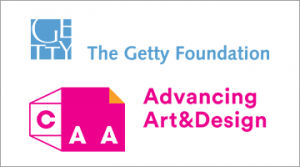
We’re pleased to announce this year’s participants in the CAA-Getty International Program. Now in its ninth year, this international program supported by the Getty Foundation will bring fifteen new participants and five alumni to the 2020 Annual Conference in Chicago, Illinois.
The participants—professors of art history, curators, and artists who teach art history—hail from countries throughout the world, expanding CAA’s growing international membership and contributing to an increasingly diverse community of scholars and ideas. This year we are adding participants from four countries not included previously—Bolivia, Saudi Arabia, Côte d’Ivoire, and Singapore—bringing the total number of countries represented by the program to fifty. Selected by a jury of CAA members from a highly competitive group of applicants, the participants will receive funding for travel expenses, hotel accommodations, conference registration, CAA membership, and per diems for out-of-pocket expenditures.
At a one-day preconference colloquium, to be held this year at the School of the Art Institute of Chicago, the fifteen new participants will discuss key issues in the international study of art history together with five CAA-Getty alumni and several CAA members from the United States, who also will serve as hosts throughout the conference. The preconference program will delve deeper into subjects discussed during last year’s program, including such topics as postcolonial and Eurocentric legacies, interdisciplinary and transnational methodologies, and the intersection of politics and art history.
This is the third year that the program includes five alumni, who provide an intellectual link between previous convenings of the international program and this year’s events. They also serve as liaisons between CAA and the growing community of CAA-Getty alumni. In addition to serving as moderators for the preconference colloquium, the five alumni will present a new Global Conversation during the 2020 conference titled Things Aren’t Always as they Seem: Art History and the Politics of Vision.
The goal of the CAA-Getty International Program is to increase international participation in the organization’s activities, thereby expanding international networks and the exchange of ideas both during and after the conference. CAA currently includes members from sixty countries around the world. We look forward to welcoming the following participants at the next Annual Conference in Chicago.
2020 Participants in the CAA-Getty International Program
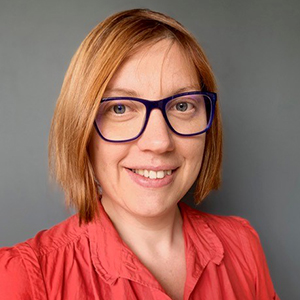
Irene Bronner is a senior lecturer with the South African Research Chair in South African Art History and Visual Culture, Faculty of Art, Design and Architecture, University of Johannesburg, South Africa. Her doctorate (DLitt et Phil), titled “Representations of Domestic Workers in Post-apartheid South African Art Practice,” was conferred by the University of Johannesburg in 2016. She then held a three-year postdoctoral research fellowship with the same institution, during which time she received a Postdoctoral Research Fellows’ Excellence Award. Her research interests center on feminist studies in the visual arts, with a focus on contemporary southern Africa. She works principally with feminist, queer and postcolonial cultural theory as well as issues of memory, affect, gender, and the aftermath of trauma. She has published in local and international journals, recently in Woman’s Art Journal and Textile: Journal of Cloth and Culture.
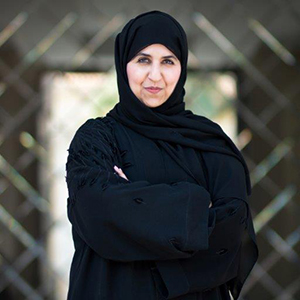
Eiman Elgibreen is an artist and an assistant professor of art history at the Princess Nourah bint Abdulrahman University in Riyadh, Saudi Arabia. She obtained a PhD in art history from the University of Sussex (UK) for her research on “Image Making: Representations of Women in the Art and Career of Safeya Binzagr 1968-2000.” Since 2011 Elgibreen has also been a freelance writer for Al-Riyadh Daily Newspaper and Al-Jazirah Daily Newspaper, and an art consultant for organizations that are concerned with preserving the legacy of Saudi pioneer artists such as Darat Safeya Binzagr (a museum devoted to the artist’s work), and Saudi Arts House (a family foundation devoted to the work of Mohammed Alsaleem). In addition, she has curated a number of art exhibitions, including the Saudi National Pavilion at the 58th Venice Biennale, 2019. Elgibreen is interested in exploring the forgotten and/or misrepresented aspects of Saudi and Arab culture through her research and her art. A goal of her work is to encourage acceptance of cultural differences.
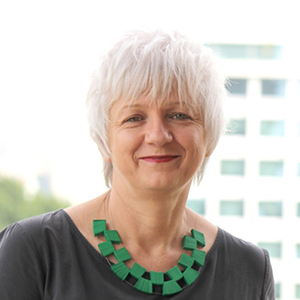
Dária G. Jaremtchuk is an associate professor of art history at the Universidade de São Paulo, Brazil, where she teaches undergraduate and graduate courses on contemporary art. As Fulbright Brazil Distinguished Chair at Emory University in 2019, she taught a course in the art history department about Brazilian contemporary visual arts. In 2018, she was a visiting scholar at Georgetown University and at Brown University in 2011. In 2010, she edited the book Arte e política: situações (Art and politics: situations) (Alameda Editora) and in 2007 she published Anna Bella Geiger: Passagens Conceituais (Anna Bella Geiger: conceptual passages) (C/Arte and Editora da Universidade de São Paulo). She is currently researching the relocation of Brazilian artists during the Brazilian military dictatorship of the 1960s and 70s and the artistic exchange between Brazil and the United States at that time. She has published on this topic in journals, conference proceedings, and book chapters.
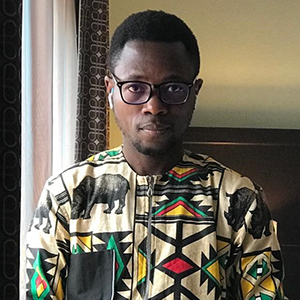
Ganiyu Jimoh received a PhD in art history from the University of Lagos, Nigeria, where he is also a lecturer. He is currently a postdoctoral fellow with the Arts of Africa and Global Souths research program in the Department of Fine Art at Rhodes University in South Africa. His research, which focuses on contemporary art, new media, satire, and cartoons has attracted major awards, including the prestigious University of Lagos Best Researcher Award in Arts and Humanities in 2011. In 2015 he received a grant to conduct research for his PhD dissertation at the African Studies Center at Michigan State University. Jimoh is also a recipient of the 2019 African Studies Association Presidential fellowship. As a scholarly writer who is also a practicing political cartoonist, Jimga (his cartoon signature) has several local and international exhibitions to his credit and currently serves as the secretary of Cartoonists Association of Nigeria (CARTAN).
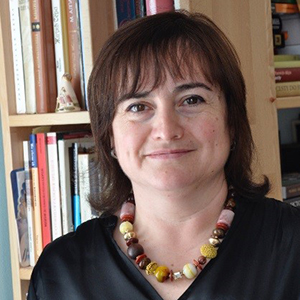
Mariana Levytska is a research associate in the Department of Art Studies of the Ethnology Institute at the National Academy of Sciences of Ukraine in Lviv. She received a PhD in the history of art from the Lviv National Academy of Arts in 2003. Based on her thesis, she published a monograph about Ukrainian portrait painting as an artistic and memorial phenomenon of the long nineteenth century. In addition, she has worked as a senior lecturer from 2005–14 and associate professor in 2015 at the Department of Architectural Environment Design in the Faculty of Architecture of the Lviv National Agricultural University. Levytska’s current area of research is Ukrainian religious art of the eighteenth century (late Baroque-Rococo period), focusing on the concept of cultural transfer according to “peripatetic works of art (such as engravings and albums)” as well as peripatetic artists. She is also interested in issues of Ukrainian historiography of the art of the twentieth century.
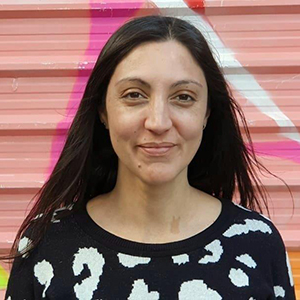
Daniela Lucena holds a PhD in social sciences from the University of Buenos Aires (UBA) and specialize in the sociology of art and culture. A researcher at the National Scientific and Technical Research Council (CONICET) in Buenos Aires, she teaches sociology of art courses at UBA, where she is also head of a research team. Since 2003 she has studied various aesthetical projects where art, culture, and politics are intertwined. Her books include Contaminación artística. Arte concreto, comunismo y peronismo en los años 40 (Artistic contamination: concret avant-garde, communism and Peronism in the 40s) (Biblios, 2015) and Modo mata moda. Arte, cuerpo y (micro)política en los 80 (Form kills fashion: art, body and [micro]politics in the 80s), coauthored with Gisela Laboureau, (EDULP, 2016). In addition to her work as researcher, since 2007 she has collaborated with PH15, a foundation that organizes photography workshops for children of vulnerable populations, assessing programs and community work linked to art.
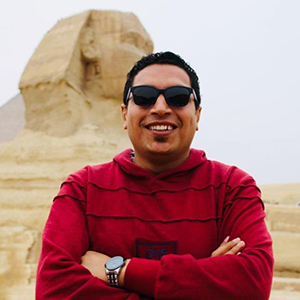
Ali Mahfouz is the director of the Mansoura Storage Museum, part of the Ministry of Egyptian Antiquities. He received a BA in 2010 and an MA in Egyptology in 2017, both from Mansoura University. He is currently working on his PhD. Mahfouz began working as an inspector of antiquities at the Ministry of Antiquities in 2012. In August 2015 he was appointed the supervisor of the Mansoura Storage Museum and in October 2018 he became its director. With colleagues, Mahfouz founded Save Mansoura, a volunteer organization dedicated to raising public awareness about the value of cultural heritage and the restoration of historic sites. He is also the cofounder of the Documentation of Architectural and Urban Heritage of Mansoura City Project, which aims to document, digitize, and archive that city’s cultural history. His greatest concern is the fate of archaeological sites damaged or destroyed because of political conflicts and the need to preserve his country’s cultural heritage in the wake of that destruction.
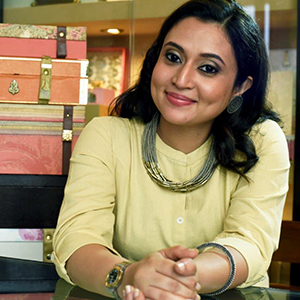
Priya Maholay-Jaradi is the founding convenor of a new art history academic program, a collaboration between the National University of Singapore (NUS) and the National Gallery Singapore. She earned an MA in art history from the School of Oriental and African Studies, London (2001); a PhD from NUS (2012), and a postdoctoral fellowship at the International Institute for Asian Studies, Leiden (2013). A former curator at the Asian Civilizations Museum, Singapore, she has curated Portrait of a Community (National Gallery of Modern Art, Mumbai, 2002), Beauty in Asia (Asian Civilizations Museum, Singapore, 2007) and Tautology of Memory (NUS Museum, Singapore, 2012). Jaradi’s monograph, Fashioning a National Art: Baroda’s Royal Collection and Institutions (1875-1924) (Oxford University Press, 2016), mobilizes provincial archives to reveal links between princely modernities and nationalisms in South Asia. She is the volume editor of Baroda: A Cosmopolitan Provenance in Transition (Marg Foundation, 2015). Her current research examines India-Singapore museological imaginations within the context of cold war diplomacy, the Non-Aligned Movement, and decolonization.
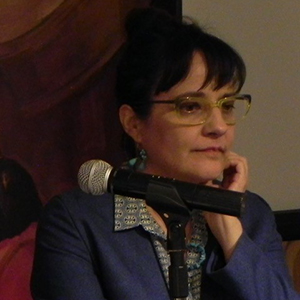
Valeria Paz Moscoso specializes in modern and contemporary Bolivian art history. She is the academic coordinator and advisor in the Department of Culture at the Universidad Católica Boliviana (La Paz), where she is also a temporary lecturer and editor of the journal Ciencia y Cultura (Science and culture). Her PhD dissertation examined the concept of repression and emancipation in the work of Bolivian artist Roberto Valcárcel. Currently, she is researching the disruption of the narrative of Indigenism in contemporary art. Additional research interests include gender, humor, critical theory, postcolonial studies, and arts-based research. She has curated exhibitions in Bolivia and the United Kingdom, and published in journals such as ESCALA Research Papers, Ciencia y Cultura, Bisagra (Hinge), Terremoto (Earthquake), and in the books Corrosión y Anomalía: escenas del arte contemporáneo boliviano (Corrosion and anomaly: scenes from contemporary Bolivian art) (2019) and Bolivia: Los caminos de la escultura (Bolivia: the paths of sculpture) (2009), a publication selected for the Bicentennial Library of Bolivia.
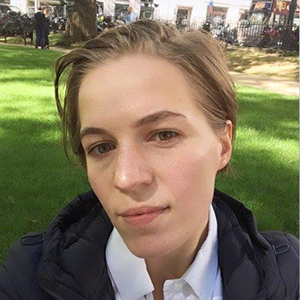
Daria Panaiotti is a photography curator and research associate in the Contemporary Art Department of the State Hermitage Museum, St. Petersburg, Russia. She graduated with honors from the European University in St. Petersburg (EUSPB), where she is currently completing her PhD with a dissertation on the history of Soviet documentary photography in Brezhnev’s era. She is also a member of the program committee of the After Post-Photography international conference, the only annual conference on photographic theory and history in Russia. Previously she was involved in the project In Support of Photography in Russia, funded by the IRIS Foundation, Moscow, where she was a member of the curatorial team that organized exhibitions of Russian photography for FotoFest 2012—an international photography festival held every two years in Houston, Texas—and where she also participated in an international portfolio review for Russian photographers at the Garage Center for Contemporary Culture in Moscow in 2011.
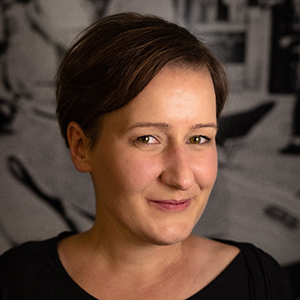
Aleksandra Paradowska is a lecturer and researcher in the Department of Art History and Philosophy, Faculty of Art Education and Curatorial Studies, at the University of Fine Arts in Poznań, Poland. After receiving a PhD from the Adam Mickiewicz University in Poznań in 2013, she was a postdoctoral fellow at the University of Wrocław from 2014–17. Her research focuses on architectural history of the nineteenth and twentieth centuries, especially the relationship between architecture and politics. For the past five years she has studied Nazi architecture in Polish territories during the Second World War in relation to different perspectives of the humanities, that is, interdisciplinary views of postcolonial and heritage studies. Paradowska has published widely on Polish interwar architecture and received several scholarships: from DAAD (Deutscher Akademischer Austauschdienst) in 2010, START by the Foundation for Polish Science in 2014, and a scholarship for leading young researchers in Poland by the Ministry of Science and Higher Education in 2017–19.
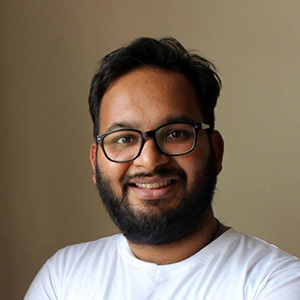
Saurabh Tewari received a BArch in 2008 from the Sushant School of Art and Architecture, Gurgaon/GGSIP University, Delhi (India), and a MDes in 2010 from the Industrial Design Center, Indian Institute of Technology Bombay. As a doctoral candidate in the Design Program at the Indian Institute of Technology Kanpur, he is attempting to map out and understand the shifting role of design in postcolonial India within the broader narrative of national development. Currently an assistant professor of design in the School of Planning and Architecture in Bhopal, Tewari has developed a curriculum that includes design history, design culture, and design studies. Ultimately, his goal is to develop South Asia’s first postgraduate program in design history and studies. He views his role in two ways: as a design historian in South Asia exploring and constructing scholarly approaches to design history, and as a South Asian scholar in the design history community voicing the potential of decolonized approaches to the field.
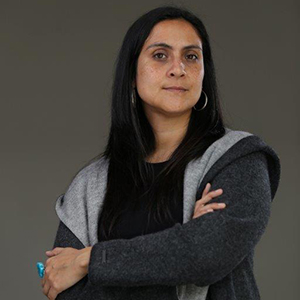
Giuliana Vidarte received a BA in Latin American literature and an MA in art history from the Pontificia Universidad Católica del Perú. In 2013 she was part of a curatorial intensive course in Northern Ireland organized by Independent Curators International (New York). In 2014 she received a travel grant to participate in the annual meeting of the International Committee for Museums and Collections of Modern Art (CIMAM) in Qatar. Between 2015–18, she was the curator of Bufeo: Amazonía+Arte, a project for the research and dissemination of Amazonian art. Vidarte has developed exhibition projects about the relationship between visual arts and literature, the rewriting of history based on the recovery of unofficial discourses, and artistic production in the Peruvian Amazon. Currently, she is chief curator and head of exhibitions at the Museo de Arte Contemporáneo in Lima (MAC Lima) and curatorial assistant for the Peruvian pavilion at the 58th Venice Biennale in 2019.
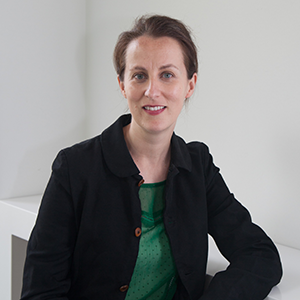
Julia Waite is the curator of New Zealand art at the Auckland Art Gallery Toi o Tāmaki, New Zealand’s largest art museum. She has worked on a number of large-scale exhibitions including the fifth Auckland triennial, If you were to live here . . . (2013) and Space to Dream: Recent Art from South America (2016). Her research interests are focused on the development of modern art in New Zealand and its connections with other peripheral modernisms. In 2015 she curated the exhibition Freedom and Structure: Cubism and New Zealand Art 1930–1960, which toured throughout New Zealand, and published an associated catalogue. She cocurated the major survey of New Zealand’s preeminent abstract painter Gordon Walters: New Vision, which opened at Auckland Art Gallery in 2018. Most recently, Waite has cocurated Louise Henderson: From Life, the first comprehensive retrospective of French-born New Zealand artist Louise Henderson. She has an MA in art history (First Class) and an MA in museum and heritage studies.
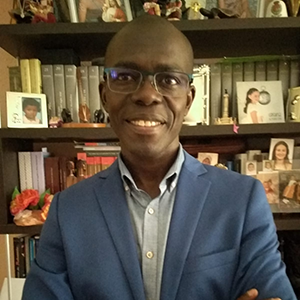
Jean-Arsène Yao received a PhD in Latin American history from the Universidad de Alcalá (Spain) in 2002. His scholarship focuses on teaching Spanish in the African Diaspora, particularly with blacks in Argentina. Currently professor of Latin America and Caribbean studies at the Université Félix Houphouët-Boigny (Côte d’Ivoire) and visiting professor at the Universidad de Alcalá and the Universidad de Granada (Spain), his teaching interests include Hispanic American culture and civilization; race, class, and ethnicity in Latin America; and Afro-Hispanic history. He has a special interest in the visual representation of people of African descent in art history and visual studies. Yao has conducted research in Argentina, Colombia, Cuba, Ecuador, and Uruguay. He has published widely, including five books, several book chapters, and over twenty articles in juried journals of research. Since 2016 he has been the founder-coordinator of the Group of Latin American Studies and Research (https://grelat-ufhb.org/).
Participating Alumni
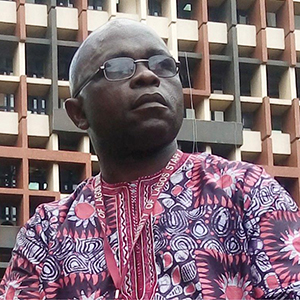
Abiodun Akande is a senior lecturer at the University of Lagos, Nigeria, where he teaches painting, art education, and art history. Akande earned a BA in fine arts from the Obafemi Awolowo University and received an MA and PhD in the visual arts of Africa from the Institute of African Studies, University of Ibadan, Nigeria. In 2013, he participated in the first Basel Summer School in African Studies at the University of Basel in Switzerland; he also attended a graduate symposium hosted by the School of Arts at Peking University in Beijing, China. Akande first participated in the CAA-Getty International Program in 2016 and returned the following year to participate in the 2017 CAA-Getty reunion program. His current research focuses on knowledge systems in the art and cultural practices of indigenous communities in Nigeria. A recent publication, “Ará òrun kìn-ìn kin-in: Òyó-Yòrùbá egúngún Masquerade in Communion and Maintenance of Ontological Balance,” (Genealogy, 3(1), 7, 2019) explores the Yòrùbá belief in life after death, and how the powers and spirits of the deceased are harnessed for the benefit of the living.
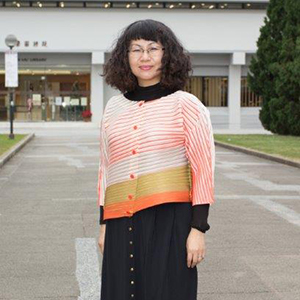
Pedith Chan is an assistant professor of Cultural Management in the Faculty of Arts at the Chinese University of Hong Kong. She received her PhD in Art and Archaeology from SOAS, University of London. Before joining the Chinese University of Hong Kong Chan was an assistant curator at the Hong Kong Museum of Art, and an assistant professor at the City University of Hong Kong. Her research interests focus on the production and consumption of art and cultural heritage in modern and contemporary China. Recent publications include The Making of a Modern Art World: Institutionalization and Legitimization of Guohua in Republican Shanghai (Leiden: Brill, 2017), “Representation of Chinese Civilization: Exhibiting Chinese Art in Republican China,” in The Future of Museum and Gallery Design (London: Routledge, 2018), and “In Search of the Southeast: Tourism, Nationalism, Scenic Landscape in Republican China,” (Twentieth-Century China, 2018). She is currently researching the making of scenic sites in modern China. Chan was a participant in the 2019 CAA-Getty International Program.
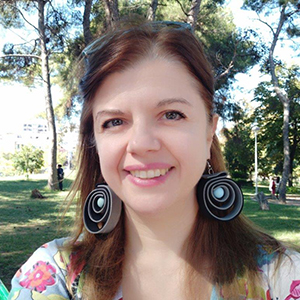
Iro Katsaridou has been the curator of modern and contemporary art at the Museum of Byzantine Culture in Thessaloniki, Greece since 2005. She studied art history at the Aristotle University of Thessaloniki and the Université Paris I-Sorbonne, and also pursued museum studies at the City University of New York. Her doctoral dissertation focused on contemporary Greek photography (Aristotle University, 2010). For the past six years Katsaridou has been researching photography and art in World War I and II, during which time she has curated exhibitions on the subject and edited related catalogues. For the last four years she has been teaching as an adjunct faculty member at several Greek universities. She has co-edited two books about photography during the Nazi Occupation of Greece (1941-1944) and written articles and book chapters on photography, exhibition display policies, as well as the relationship between contemporary Greek art and politics. In 2019, she participated in the CAA-Getty International Program.
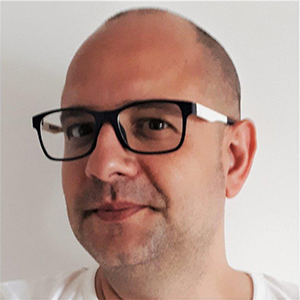
Cristian Nae is an associate professor at the George Enescu National University of Arts in Iași, Romania, where he teaches courses on contemporary art history, critical theory, visual and exhibition studies. He has benefited from scholarships and research grants from the Erste Foundation (Vienna), National Research Council, Romania (CNCS-UEFISCDI) , the CAA-Getty International Program, the Getty Foundation (Los Angeles), and New Europe College (Bucharest). His latest studies have appeared in collective volumes published by Wiley-Blackwell (2019, forthcoming) and Routledge (2018). Nae is the co-editor of Rethinking the Image of the World: Projects and Sketches. Contemporary Romanian Art 2010-2020 (Hatje Cantz, 2019, forthcoming). As a curator, he is the co-organizer of the exhibition Rethinking the Image of the World: Projects and Sketches (Musée Mill, La Louvrière, Belgium, 2019), which was part of the Europalia Arts Festival. Nae also curated Unfinished Conversations on the Weight of Absence, the exhibition marking Romania’s participation in the 58th Venice Biennale (2019). Nae participated in the first year of the CAA-Getty International Program, in 2012.
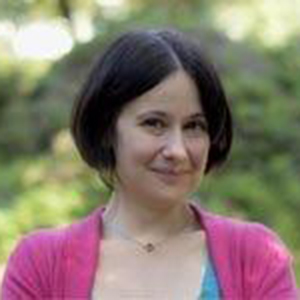
Nóra Veszprémi is a research associate for the European Research Council-funded project Continuity/Rupture: Art and Architecture in Central Europe 1918–1939 (CRAACE) at Masaryk University, Brno (Czech Republic). She is also an honorary research fellow at the University of Birmingham (UK), where she recently completed a project on museums in Austria-Hungary between 1867 and 1918. In 2014–15 she taught at the Institute of Art History at Eötvös Loránd University, Budapest (Hungary), where she also received her PhD in 2013. Veszprémi specializes in nineteenth- and early-twentieth-century Central European art. A former curator at the Hungarian National Gallery, she is the author of a monograph on romanticism and popular taste in mid-nineteenth century Hungary (in Hungarian) and co-author (with Matthew Rampley and Markian Prokopovych) of two forthcoming volumes on museums in Austria-Hungary: An Empire on Display: The Art Galleries and Museums of Austria-Hungary (Penn State University Press, 2020); and Liberalism, Nationalism and Design Reform in the Habsburg Empire: Museums of Design, Industry and the Applied Arts (Routledge, 2020). She is currently working on a monograph about historical memory in Central Europe after the collapse of the Habsburg Empire. Veszprémi was a 2015 participant in the CAA-Getty International Program.
Deadline extended! Annual Conference Committee Seeks Members
posted by CAA — Nov 12, 2019
CAA invites nominations and self-nominations for two at-large members of the Annual Conference Committee to serve a three-year term. Terms begin February 2020, immediately following the 108th Annual Conference.
The Annual Conference Committee, working with the CAA Programs Department, selects the sessions and shapes the program of the Annual Conference. The committee ensures that the program reflects CAA’s goals for the conference, namely, to make it an effective place for intellectual, aesthetic, and professional learning and exchange; to reflect the diverse interests of the membership; and to provide opportunities for participation that are fair, equal, and balanced.
The Annual Conference Committee meets during the conference and at the call of the program chair and vice president for Annual Conference. Committee members also serve to support sessions comprised of individual papers and projects where a formal chair has not been identified.
Please send a 150-word letter of interest and a CV to Mira Friedlaender (mfriedlaender@collegeart.org), CAA manager of annual conference.
Deadline (extended): February 18, 2020
Art Journal / Art Journal Open (AJO) Editorial Board Seeks New Members
posted by CAA — Nov 11, 2019
CAA invites nominations and self-nominations for two individuals to serve on the Art Journal / AJO Editorial Board for a three-and-one-half-year term: January 1, 2020–June 30, 2023 Candidates may be artists, art historians, art critics, art educators, curators, or other art professionals; institutional affiliation is not required. Art Journal, published quarterly by CAA, is devoted to twentieth- and twenty-first-century art and visual culture. AJO is an online forum for the visual arts that presents artists’ projects, conversations and interviews, scholarly essays, and other forms of original content. Committed to fostering new intellectual exchanges in the fields of modern and contemporary art, AJO prioritizes material that makes meaningful use of the web and publishes on a rolling basis.
The editorial board advises the Art Journal and AJO editors-in-chief and assists them in seeking authors, articles, artists’ projects, and other content for the journal; performs peer review and recommends peer reviewers; guides the journals’ editorial programs and may propose new initiatives for them; promotes and advocates for both journals; and may support fundraising efforts on their behalf. Members also assist the editors-in-chief to keep abreast of trends and issues in the field by attending and reporting on sessions at the CAA Annual Conference and other academic conferences, symposia, exhibitions, and events.
The Art Journal / AJO Editorial Board meets three times a year, with meetings in the spring and fall plus one at the CAA Annual Conference in February. The fall and spring meetings are currently held by teleconference. Members are expected to pay travel and lodging expenses to attend the conference in February. Members of all editorial boards volunteer their services to CAA without compensation.
Candidates must be current CAA members in good standing and should not be serving on the editorial board of a competitive journal or on another CAA editorial board or committee. Members may not publish their own work in the journals during the term of service. CAA encourages applications from colleagues who will contribute to the diversity of perspectives on the Art Journal / AJO Editorial Board and who will engage actively with conversations about the discipline’s engagements with differences of culture, religion, nationality, race, gender, sexuality, and access. Nominators should ascertain their nominee’s willingness to serve before submitting a name; self-nominations are also welcome. Please send a letter describing your or your nominee’s interest in and qualifications for appointment, a CV, and your contact information to Joan Strasbaugh, Managing Editor, at JStrasbaugh@collegeart.org or c/o CAA, 50 Broadway, 21st floor, New York, NY 10004.
Deadline: Sunday, December 8, 2019
Announcing the 2020 CAA-Getty International Program Participants
posted by CAA — Oct 07, 2019
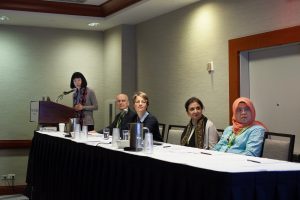
CAA-Getty International Program Participating Alumni (left to right) Chen Liu, Nazar Kozak, Katarzyna Cytlak, Nadhra Khan, and Sarena Abdullah at the 2019 Annual Conference in New York. Photo: Ben Fractenberg
We’re pleased to announce this year’s participants in the CAA-Getty International Program. Now in its ninth year, this international program supported by the Getty Foundation will bring fifteen new participants and five alumni to the 2020 Annual Conference in Chicago, Illinois.
The participants—professors of art history, curators, and artists who teach art history—hail from countries throughout the world, expanding CAA’s growing international membership and contributing to an increasingly diverse community of scholars and ideas. This year we are adding participants from four countries not included previously—Bolivia, Saudi Arabia, Côte d’Ivoire, and Singapore—bringing the total number of countries represented by the program to fifty. Selected by a jury of CAA members from a highly competitive group of applicants, the participants will receive funding for travel expenses, hotel accommodations, conference registration, CAA membership, and per diems for out-of-pocket expenditures.
At a one-day preconference colloquium, to be held this year at the School of the Art Institute of Chicago, the fifteen new participants will discuss key issues in the international study of art history together with five CAA-Getty alumni and several CAA members from the United States, who also will serve as hosts throughout the conference. The preconference program will delve deeper into subjects discussed during last year’s program, including such topics as postcolonial and Eurocentric legacies, interdisciplinary and transnational methodologies, and the intersection of politics and art history.

This is the third year that the program includes five alumni, who provide an intellectual link between previous convenings of the international program and this year’s events. They also serve as liaisons between CAA and the growing community of CAA-Getty alumni. In addition to serving as moderators for the preconference colloquium, the five alumni will present a new Global Conversation during the 2020 conference titled Things Aren’t Always as they Seem: Art History and the Politics of Vision.
The goal of the CAA-Getty International Program is to increase international participation in the organization’s activities, thereby expanding international networks and the exchange of ideas both during and after the conference. CAA currently includes members from sixty countries around the world. We look forward to welcoming the following participants at the next Annual Conference in Chicago.
2020 Participants in the CAA-Getty International Program
Irene Bronner, Senior Lecturer, NRF South African Research Chair in South African Art and Visual Culture, University of Johannesburg, South Africa
Eiman Elgibreen, Assistant Professor of Art History, The Princess Nourah bint Abdulrahman University, Riyadh, Saudi Arabia
Daria Jaremtchuk, Associate Professor of Art History, University of São Paulo, Brazil
Ganiyu Jimoh, Lecturer, University of Lagos, Nigeria, and Postdoctoral Fellow, Arts of Africa and Global Souths research program, Department of Fine Art, Rhodes University, South Africa
Mariana Levytska, Research Associate, Department of Art Studies, Ethnology Institute, UNAS (National Academy of Sciences of Ukraine)
Daniela Lucena, Head of Research Team, National Scientific and Technical Research Council (CONICET), University of Buenos Aires, Argentina
Ali Mahfouz, Director, Mansoura Storage Museum, Ministry of Egyptian Antiquities, Egypt
Priya Maholay-Jaradi, Convenor, Art History, National University of Singapore
Valeria Maria Paz Moscoso, Academic Coordinator and Advisor, Universidad Catolica Boliviana San Pablo, La Paz, Bolivia
Daria Panaiotti, Curator of Photography and Research Associate, The State Hermitage Museum, St. Petersburg, Russia
Aleksandra Paradowska, Assistant Professor, University of Fine Arts, Poznań, Poland
Saurabh Tewari, Assistant Professor, School of Planning and Architecture, Bhopal, India
Giuliana Vidarte, Chief Curator and Head of Exhibitions, Museum of Contemporary Art of Lima and Peruvian University of Applied Sciences, Peru
Julia Waite, Curator of New Zealand Art, Auckland Art Gallery Toi o Tāmaki, New Zealand
Jean-Arsène Yao, University Félix Houphouët-Boigny, Côte d’Ivoire
Participating Alumni
Abiodun Akande, Senior Lecturer, University of Lagos, Nigeria
Pedith Chan, Assistant Professor of Cultural Management, Chinese University of Hong Kong
Iro Katsaridou, Curator of Modern and Contemporary Art, Museum of Byzantine Culture, Thessaloniki, Greece
Cristian Emil Nae, Associate Professor, George Enescu National University of Arts, Iasi, Romania
Nora Veszpremi, Research Associate, Continuity/Rupture: Art and Architecture in Central Europe 1918–1939 (CRAACE), Masaryk University in Brno, Czech Republic
CWA Picks for September 2019
posted by CAA — Sep 12, 2019
CAA’s Committee on Women in the Arts selects the best in feminist art and scholarship to share with CAA members on a monthly basis. See the picks for September below.
FAST FASHION/SLOW ART
Luther W. Brady Art Gallery, The George Washington University, Washington, DC
August 9 – December 15, 2019
Beyond the glitz and glamour of the fashion industry are serious timely questions around waste and consumerism in the garment industry, which is what the contemporary artists and filmmakers explore in Fast Fashion/Slow Art. The diverse group of emerging and established contemporary artists and filmmakers from China, Denmark, Germany, Norway, and the United States includes Julia Brown, Carole Frances Lung (Frau Fiber), Cat Mazza, Senga Nengudi, Martha Rosler, Hito Steyerl, Martin de Thurah, Rosemarie Trockel, and Wang Bing, who collectively encourage scrutiny of today’s garment industry. For example, Bing’s documentary installation, 15 hours, was shot in a factory in China, capturing the labor of some of its 300,000 workers, emitting a meditation on the contemporary meaning of work in present-day China. Also available during the exhibition are two web programs, ”Planet Money Makes a T-Shirt” and “Sweatshop—Deadly Fashion.”
Her Own Way
Female Artists and the Moving Image in Art in Poland: From 1970s to the Present
Tokyo Photographic Art Museum
August 14 – October 14, 2019
The exhibition of artworks by Polish women artists features moving image, which has a rich history in Polish art scene. Women artists have used video and photography even though during the Cold War those working “behind” the Iron Curtain had little access to equipment and training. Despite hardships, women experimented with video expression. Following democratization of the country after the fall of the Berlin Wall and the introduction of the free market economy, Poland welcomed economic growth and material affluence. This contributed to deepening income gaps and rapid changes in value. Polish critical art of the 1990s addressed those contradictions in society. Those who were born under the Communist regime and brought up after democratization started looked back with a critical distance to explore new perspectives and question complex social and political conditions. This has driven a rich and diverse landscape for moving image, including the use of more accessible media. The exhibition features works from 1970s onwards questioning contradictions of the global economic system. It includes some of the key figures in Polish art scene including Bogna Burska, Izabella Gustowska, Zuzanna Janin, Katarzyna Kozyra, Anna Kutera, Natalia LL, Ewa Partum, Agnieszka Polska, Joanna Rajkowska, and Alicja Rogalska, among others.
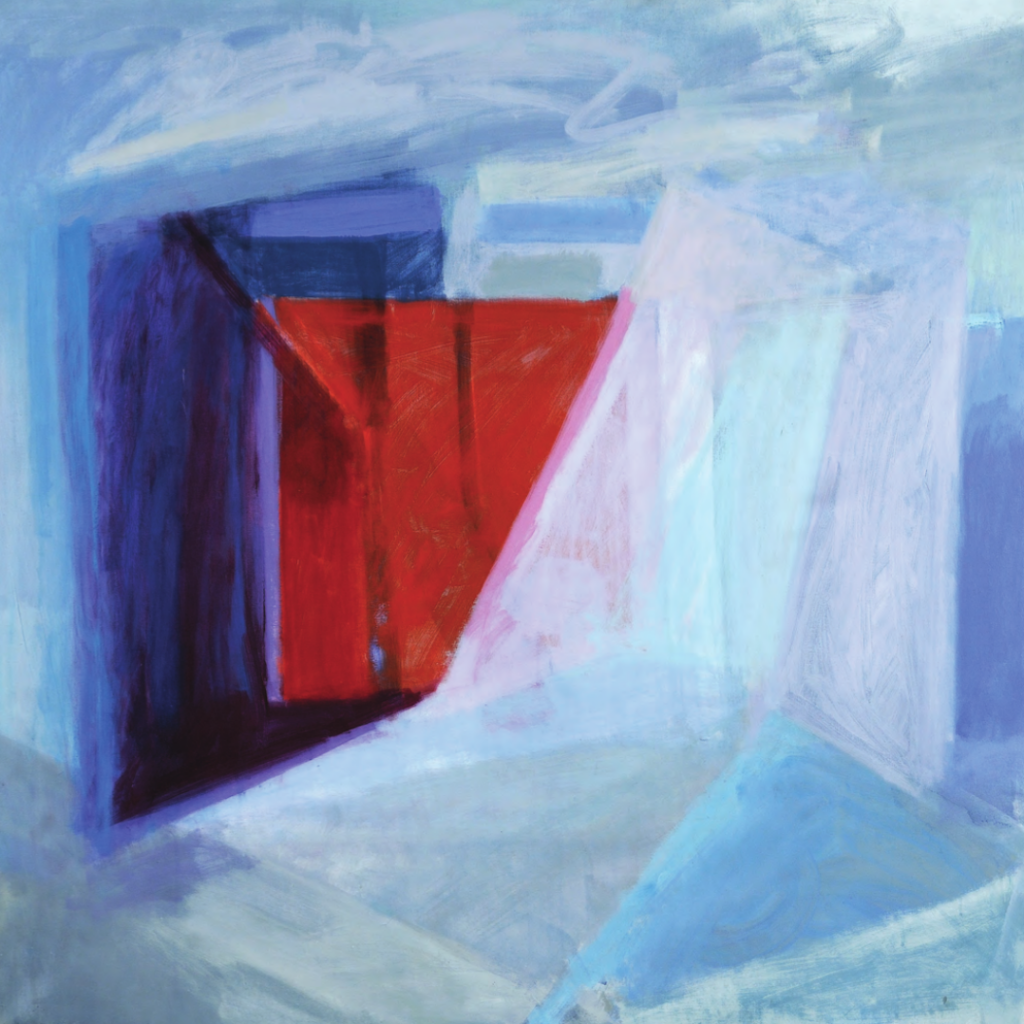
Helene Herzbrun, Entrances (detail), 1977. Acrylic on canvas, framed: 52 5/8 × 52 3/4 × 1 5/8 in., image: 52 × 52 in. American University Museum, X1639.
Grace Hartigan & Helene Herzbrun: Reframing Abstract Expressionism
American University Museum at the Katzen Arts Center, Washington, DC
September 3 – October 20, 2019
The past few years has witnessed an urgent reappraisal of the Abstract Expressionist canon in the United States. Recent game-changers, such as the Women of Abstract Expressionism exhibition and catalogue (2016), and steady growth in the art market, have turned a sharp eye on the women whose careers received little critical and financial support during and after the heyday of heroic gesturalism and figurative abstraction in the 1950s. Norma Broude, the distinguished feminist art historian and professor emerita at The American University, has organized an exhibition that argues for a reframing of the geographic center of New York, and presents a two-person show on Grace Hartigan (1922-2008) and Helene Herzbrun (1922-1984). Both artists, who had a cordial friendship, had lived and exhibited for many decades around the Baltimore and Washington, DC region, and many of the paintings on view are drawn from local private collections and museums. Hartigan, the more celebrated of the two, has received considerable scholarly attention. Her early career in New York was shaped by social relationships with the first generation of Abstract Expressionists, including Jackson Pollock and Willem de Kooning (a seminal influence), and the seductive riffraff of modern life in the fifties around her studio on the Lower East Side. Hartigan often incorporated the popular and material subjects—the “vulgar and vital”—from her surroundings, and Baltimore eventually proved to have much to offer. Her early artistic development was also largely influenced by her own study of paintings at the Metropolitan Museum of Art and transformative friendships with poets Frank O’Hara and Barbara Guest. By 1953, she had the attention of Alfred Barr, Jr. and curator Dorothy C. Miller, who accessioned her Baroque-inspired masterpiece, Persian Jacket (1952), into the permanent collection of the Museum of Modern Art; this was followed by her participation as the only woman artist in MoMA’s groundbreaking exhibitions, 12 Americans (1956) and The New American Painting (1958-1959). Broude’s catalogue essays purposefully consider the negative impact on Hartigan’s career after leaving New York City for Baltimore, and the artist’s serious disappointment in the regional artistic scene. This shifted to some degree when she found support in her new intellectual community as a revered professor and mentor at the Maryland Institute of Art (MICA), Hoffberger School. Comparably, Broude develops a fascinating biographical sketch of Helene Herzbrun, whose archives are held at American University. Herzbrun experienced similar challenges in her desire to establish critical recognition outside the parameters of New York and beyond the stylistic popularity of Color Field painting practiced by her male contemporaries in Washington. Herzbrun maintained an important correspondence with Ab-Ex artist Jack Tworkov, with whom she worked as a MFA student at AU. She was a faculty member in the University’s art department until her death in 1984. Addressing the limited opportunities for artists in the area, Herzbrun co-founded an important cooperative space called Jefferson Place Gallery in DC. Hartigan and Herzbrun make exciting visual partners in Reframing Abstract Expressionism. Their painterly dialogues on nature and the landscape interrogate the creative process and explore the persistent motivations to paint abstractly while negotiating representation, structure, and spontaneity, all essential components of the living language of Abstract Expressionism. This exhibition expands our understanding of the networks of production and distribution of ideas and resources on Abstract Expressionism to the regional centers of the country.



